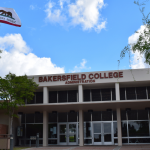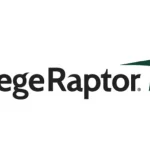So much of the promise of artificial intelligence comes down to the ability of a machine to learn and get smarter over time. Before you start thinking about sci-fi movies like Terminator, what we’re talking about is software that can learn from training and experience. Think about how humans “connect the dots” as we learn from experience. It’s a similar challenge for AI – can the machine (software) learn and become smarter from experience?
In higher education, colleges and universities are increasingly exploring AI communications technology as a way to enable staff to have more meaningful student interactions and provide 24/7 virtual support.
Institutions considering AI communications, like chatbots, have four credible options: building something in-house, using an AI chatbot that comes with a larger piece of software, using a single-tenant AI chatbot, and/or licensing a multi-tenant system agnostic AI chatbot that accesses data from multiple systems and learns from a large data set of interactions across multiple institutions.
With each approach, it is important to understand how much learning is possible – and more importantly – what happens to that learning over time.
Building an AI Chatbot “In House”
The upside of building a chatbot is that the institution can build the technology exactly to its own specifications and have complete control from the start. This can be very appealing to an institution that has sufficient bandwidth and determination to manage this sort of project. The downsides are clear. For schools with limited IT resources, this can often be a non-starter. Moreover, even for institutions that have staff bandwidth for this sort of project, the institution’s data set will be limited to interactions with its own student population. The institution will miss out on the real opportunity for AI to learn from “big data.” Finally, the AI world is evolving. Institutions that build their own tools using the current technology risk missing out on new innovations and the opportunity to do even more with AI.
Using an AI Chatbot That is Part of a Larger Piece of Software
The main benefit of this approach is that the institution does not need to bring on an additional vendor for the AI chatbot. A secondary benefit is that the AI chatbot can access data from within the larger technology. However, there are downsides to this approach: 1) The AI chatbot may be limited in its ability to bring in data from other systems and/or require coordination from multiple technology providers to support an integration, 2) the AI being used will not be “best of breed” and the institution will eventually discover that the provider is more focused on its core platform and less on the AI, 3) the institution will be limited to the learnings from the interactions at its individual institution, which will be a fairly small data set, 4) if the institution switches systems, it will lose all of the AI learning that took place in the chatbot.
Using a Single-Tenant AI Chatbot
This third approach avoids several of the pitfalls of the first two choices. Notably, this approach is system agnostic, which means it can plug into many different systems to access data. Moreover, it is supported by an external vendor, meaning reduced burden on staff. However, this approach also suffers from having a small data set, which hampers the ability of the AI to truly learn and get smarter at its maximum potential.
Licensing a Multi-Tenant, System Agnostic AI Chatbot
This fourth approach overcomes the challenges of building a chatbot in-house, using one that is part of a larger system, and one that is single-tenant. First, by licensing a system agnostic AI chatbot, the institution can access data from a multitude of other information systems. Second, the chatbot is not tied to a specific system. If the institution changes one system, the AI can be directed to access data from the new one. The school will not lose any prior machine learning; the school retains the machine learning even though a system is switched out or replaced. Third, the multi-tenant approach enables the AI to learn from millions of interactions across a multitude of institutions. This “big data” approach delivers considerably more learning to each institution on the platform. It also supports a very strong “Day 1” experience. Finally, keep in mind that an organization taking this approach in higher education will be determined to keep innovating and improving this unique platform. We ultimately believe that the multi-tenant, system agnostic approach to AI communications will turn out to be “best of breed” for colleges and universities and the students they serve.
Looking Ahead
Naturally, there is a lot of excitement around AI communications and chatbots. They have tremendous potential to support staff as they assist students, and to streamline workflows. If we look to the next few years, we can imagine a world in which so many traditional processes – from applications, to various forms, to how students are able to self-service – will be disrupted by AI and technologies like chatbots.
Colleges and universities will want to consider the approach to this technology that best meets their needs. For our part, at Ocelot, we do believe that giving institutions the best in class AI that benefits from a “big data” set across hundreds of schools will prove to be the best approach and deliver the most on the promise of AI.
We also believe that colleges and universities win when the technology they use has the greatest versatility. That is why we take a system agnostic approach that supports flexible integrations. Over time, institutions will evolve their technology stack. They are best served by an AI technology that can evolve with them. If an institution wants to change enterprise software such as SIS, CRM, or LMS it will want to know that doing so will not result in losing all the productive AI learning that took place in the years running up to the change.















